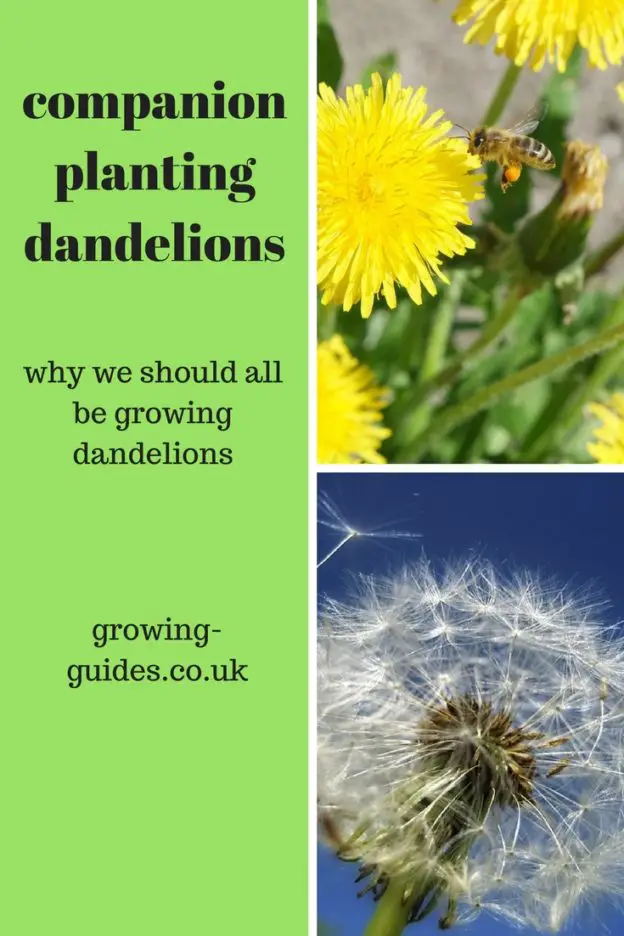This post might surprise a few of you gardeners out there. Companion planting dandelions ??? well it surprised me too.
Companion Planting Dandelions
Every body knows what a dandelion looks like and most of you will think of them as weeds. To be pulled up and destroyed as soon as they are spotted but on closer inspection dandelions are very useful little plants.
Dandelions are great companion plants
Allowing dandelions to grow near to early flowering fruits and vegetables will attract pollinators on the look out for nectar. Fruits and vegetables like :-
- Broad beans
- Early strawberries
- Apricots
- Plums
- Peaches
- Early Apples
- Early Pears
- Cherries
Will all greatly benefit from having dandelions growing in their proximity.
Likewise growing dandelions near late pollinators like:-
- End of season Tomatoes
- Peaches
- Plums
- apples
- Pears
- Strawberries
- Runner Beans
Will increase the probability of pollination and or ripening.
Uses For Dandelions
The flowers can be made into wine, and the young, tender leaves can be eaten in salads. The roots can be used as a substitute for coffee and the leaves are used in teas.
In the past, dandelion roots and leaves were used to treat liver problems. Native Americans also boiled dandelion in water and took it to treat kidney disease, swelling, skin problems, heartburn, and upset stomach. In traditional Chinese medicine (TCM), dandelion has been used to treat stomach problems, appendicitis, and breast problems, such as inflammation or lack of milk flow. In Europe, dandelion was used in remedies for fever, boils, eye problems, diabetes, and diarrhea.
University of Maryland medical center
Dandelions Attract Pollinators
Early and late pollinators are often short of flowers bearing nectar, dandelions are there to fill the gap. So if your early broad beans are in need of pollinators a few handy dandelions will attract the pollinators to your plot.
Other Benefits of Dandelions
Dandelions have deep tap roots and are able to tap into nutrients deep in the soil.The tap roots on dandelions can stretch to between 10 to 15 feet into the soil thus releasing nutrients not available to other plants. Nutrients like copper. The deep reaching roots also help to break up heavy soils especially when the plants die, leaving air spaces where the roots were.
Dandelions give off ethylene gas which can cause fruits and flowers to ripen quickly. Handy for late tomatoes but not so clever in an orchard.
Due to the extra nutrients picked up by the deep tap roots, dandelions make a great addition to the compost bin. As long as you don’t add the seed head, otherwise you’ll be over run with plants.
Noxious Weed
In some areas the dandelion is considered a noxious weed and is considered a nuisance in parks and recreation spaces in North America. However for the organic grower the benefits far out weigh the disadvantages.
Dandelion Clones
Many species of dandelion produce seed without pollination. This means that the seedlings are genetically identical to their parent plant.
A single dandelion head has over 300 flowers that look like petals at first glance. No wonder they spread so prolifically. So it is a shame that so many gardeners waste this free resource that nature provides us with.

